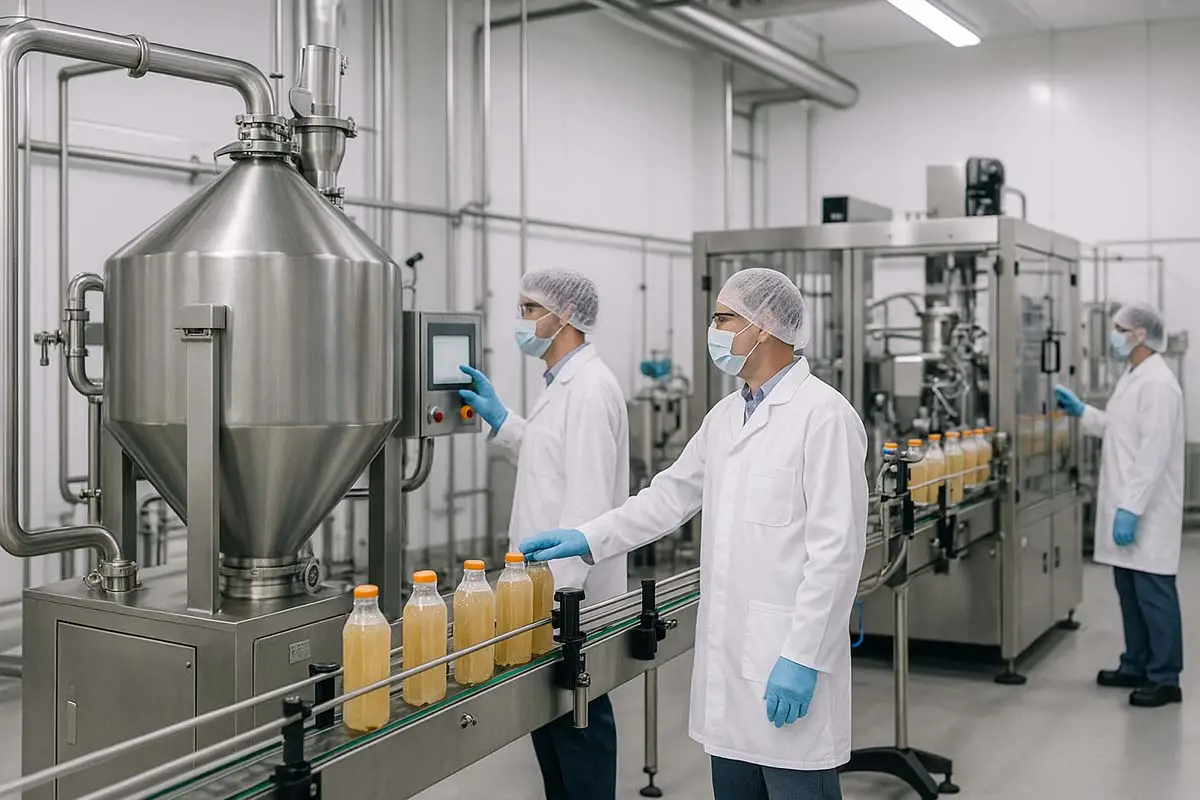Introduction: Feeding the World with Precision
The food and beverage industry is one of the largest and most essential sectors globally. From brewing your morning coffee to producing international delicacies, industrial tools work behind the scenes to ensure safety, consistency, and efficiency.
Unlike other industries, food production tools must meet strict hygiene and safety standards, while still being powerful and efficient enough to handle mass production. In this article, we’ll explore the key categories of tools, their technical specifications, pros and cons, and address FAQs to help qualify for Google zero search snippets.
Key Categories of Industrial Tools in Food and Beverage
1. Food Processing Machinery
- Examples: Industrial mixers, blenders, slicers, extruders.
- Key Feature: Stainless steel construction for hygiene and durability.
- Challenge: High cleaning and sanitization requirements.
2. Packaging and Bottling Tools
- Examples: Automated filling lines, shrink-wrapping machines, labeling systems.
- Key Feature: High-speed automation for mass production.
- Challenge: Downtime during maintenance leads to costly delays.
3. Quality Control and Testing Equipment
- Examples: Metal detectors, X-ray inspection systems, spectrophotometers.
- Key Feature: Detect contaminants and ensure compliance with food safety standards.
- Challenge: Expensive technology requiring skilled operators.
4. Refrigeration and Cold Storage Tools
- Examples: Blast chillers, industrial freezers, refrigerated conveyors.
- Key Feature: Maintain safe storage temperatures across the supply chain.
- Challenge: High energy consumption and frequent maintenance.
5. Cleaning and Sanitation Equipment
- Examples: High-pressure steam cleaners, CIP (Clean-In-Place) systems, UV sterilizers.
- Key Feature: Designed for maximum hygiene compliance.
- Challenge: Requires strict adherence to protocols to prevent contamination.
Technical Specifications That Matter
- Mixer Capacity: 200–1,000 liters for industrial-scale mixers.
- Packaging Speed: Up to 60,000 bottles per hour in automated lines.
- Metal Detector Sensitivity: Detects particles as small as 0.3 mm.
- Blast Freezer Temp: -40°C for rapid cooling.
- CIP System Efficiency: Reduces cleaning times by up to 70%.
Pros and Cons of Industrial Tools in Food and Beverage
Advantages:
- Ensure consistent product quality and hygiene.
- Increase efficiency with high-speed automation.
- Support global distribution through packaging and refrigeration.
- Reduce waste with precision portioning and monitoring.
Disadvantages:
- Very high initial investment and operational costs.
- Require constant sanitation and strict regulatory compliance.
- Energy-intensive, especially for refrigeration.
- Complex automation may need specialized technicians.
Interesting Facts
Funny Fact: Some chocolate factories use giant mixers the size of small cars, leading workers to joke that “Willy Wonka would be jealous.”
Lesser-Known Fact: UV sterilization tools are now widely used in beverage bottling plants – they sanitize water and bottles without using a single drop of chemical disinfectant.
Frequently Asked Questions (FAQ)
1. What are the most important industrial tools in the food industry?
Food processing machinery, packaging systems, refrigeration units, and quality control devices.
2. Why is stainless steel used so much in food tools?
Because it’s resistant to corrosion, easy to sanitize, and complies with food safety regulations.
3. How do Clean-In-Place (CIP) systems work?
They clean machinery internally with automated cycles of water, detergent, and disinfectant without disassembly.
4. What role does automation play in the beverage industry?
It enables bottling, labeling, and packaging at incredible speeds while reducing human error.
5. How do metal detectors and X-rays improve food safety?
They detect foreign objects like glass, plastic, or metal fragments before products reach consumers.
6. What are the challenges with refrigeration in food production?
Energy costs, environmental concerns with refrigerants, and maintaining temperature consistency.
7. How fast can industrial bottling lines run?
Advanced systems can process up to 60,000 bottles per hour.
Conclusion: Tools That Keep the World Nourished
The food and beverage industry relies on industrial tools to feed billions safely and efficiently. From giant mixers in chocolate factories to high-tech quality control scanners, these tools are the guardians of taste, hygiene, and consistency.
As consumer demands evolve, the future points toward more automation, eco-friendly refrigeration, and chemical-free sanitation technologies.
💬 Your Turn:
Have you worked with or seen industrial food and beverage tools in action? Share your stories in the comments – and don’t forget to share this article on social media to spread the knowledge.


